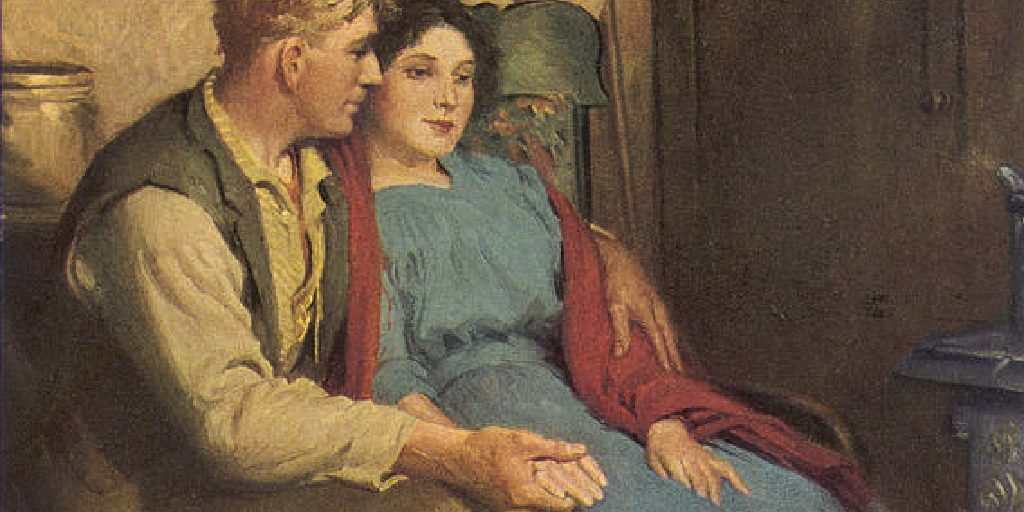I love watching a good movie. And I’m hardly the only one among my fellow Latter-day Saints.
In the thirteen articles of faith, there are many beliefs attributed to Latter-day Saints, but only one behavior, “If there is anything virtuous, lovely, or of good report, or praiseworthy, we seek after these things.”
We are seekers—specifically seekers of the good and beautiful.
In our social conversation, no cultural product is discussed more than the movie. It’s self-contained, small enough to be accessible, but long enough to develop a theme. It’s replicable, so it can be discussed broadly. And it integrates more types of art than perhaps any other single cultural product.
What makes a film praiseworthy, virtuous, and lovely? In probing different films, I’m certainly not making final judgments on them. I value all of the films I discuss below.
I started my search by focusing on seven principles that were a distinctly Latter-day Saint answer to the question of what makes a movie good—a sort of thirteenth article of faith criticism.
Entertaining and Fun
In many ways, Latter-day Saint art criticism takes a lesson from Aristotle. He defined good art as the realization of a true idea in an external form created from human’s natural pleasures.
So while the truth may be the more important goal of art, without the pleasure that accompanies it, it’s just a sermon.
This first principle is often overlooked by contemporary film criticism. The perfect movie has to be entertaining. After all, humankind exists so “we might have joy.”
Consider the charm and humor of The Lego Movie. Its quick wit, colorful animation, and playful storytelling make it an entertaining ride while also delivering meaningful messages about creativity, self-worth, and community. In contrast, a film like Cars 2 struggles to find this balance; it sacrifices engaging storytelling for an overly complex plot and pacing that can be too slow or scattered, failing to keep viewers invested or entertained. Cars 2 is a poor movie not just because of its questionable themes but because it feels like a slog to sit through.
Even films that tackle heavy themes or difficult topics can maintain a sense of fun and adventure. Toy Story 3 deals with themes of growing up and letting go, but it still has plenty of humor, heart, and action that make it a joyful engaging watch for audiences of all ages. This blend of emotion and excitement keeps the film from feeling too heavy. On the other hand, The Good Dinosaur is an example of a film that misses the mark on entertainment. Despite its stunning visuals, its pacing is slow, and its more somber tone often leaves viewers feeling weighed down and ready to check out.
The important messages that a movie imparts may ultimately be the greater good, but if you fall asleep halfway through, it doesn’t matter.
Teaches Truth
The other half of Aristotle’s equation is that a good film must seek deep and important truths in ways that simply can’t be internalized through other mediums. President Gordon B. Hinckley once said, “We are the creatures of our thinking.” Films have a powerful role in shaping our thoughts and perspectives, so it’s crucial they promote themes that elevate, inspire, and reflect divine principles.
Inside Out is a great example of this, exploring emotions in a way that acknowledges the complexity and value of even difficult feelings like sadness. The film offers an honest and uplifting look at personal development. In contrast, Frozen II tackles themes of self-discovery but places a strong emphasis on self-fulfillment without fully integrating themes of community or duty. While the film encourages doing “the next right thing,” the journey can feel disconnected from higher principles that teach where true happiness is found—particularly in relationships and service.
Family is central to God’s plan, and films should reflect the truth about family relationships and unity. The Incredibles showcases a family working through conflicts and misunderstandings, ultimately growing stronger through unity and support for each other. By contrast, The Simpsons Movie humorously deconstructs family life, often showing dysfunction and irresponsibility as sources of humor. While intended for laughs, the portrayal can risk making the family unit appear burdensome rather than a source of growth and love.
A film’s themes should also align with eternal principles like love, faith, and sacrifice. Paddington 2 shines in this regard, offering a warm narrative about kindness, generosity, and the power of looking for the good in others. Films should avoid themes that distort or misrepresent gospel truths. Peter Pan glamorizes eternal childhood and avoiding responsibility, suggesting that maturity and growth are unnecessary burdens. This romanticizing of carefree youth distorts truths about life’s purpose and the value of embracing responsibilities.
Ultimately, films should elevate and inspire. “The righteous love the truth,” so any great film must teach it and help us understand it more deeply.
Moral Clarity
In a family film, the audience should generally be able to distinguish between right and wrong actions. While all moral films should have some clarity about right and wrong, films for young children can’t exhibit as much complexity as more mature narrative films can.
This doesn’t mean doing away with all moral grappling. But that grappling is often simplified. Encanto, for example, makes it clear that family unity and bonding are good. There remain questions about how to best achieve that, but because of the family film’s audience, that core principle is not ambiguous.
Take Moana, for example. The film teaches true principles of courage and responsibility in caring for her family. In my opinion, it is one of the great contemporary family films in terms of teaching truth. But the film sets up morally ambiguous choices where she must protect her family or obey her father. Great family films can get away with that if they explore the consequences of both the good and bad, but in Moana, the overall good of her journey means we never grapple with the negative effects of her impulsiveness and disobedience.
These kinds of tensions are important for mature minds to explore but can prevent younger children from creating firm core principles and can undermine the important child-parent conversations that the best family films facilitate.
Even when the sides are clear, this shouldn’t mean every character always does the right thing. But the narrative should ensure the audience is “instructed sufficiently” about what is good and what is not, and allow choices their natural consequences.
In The Lion King, Simba’s journey to reclaim his role as king deals with themes of guilt, responsibility, and redemption, but it never blurs the line between right and wrong. Scar’s villainy is clear and consistent, and his deceit is never excused. And Simba fully grapples with the effects of his choices. In contrast, Despicable Me makes light of behaviors like theft and trickery, presenting them humorously and even as important goals to fulfill.
Consequences are the classic mechanism for communicating this moral clarity. The Secret Garden is a great example. Characters who are selfish or cruel face loneliness, while those who are kind and compassionate find joy and healing. But Frozen complicates this principle. Elsa’s defiant anthem, “Let It Go,” celebrates her rejection of responsibility, portraying it as empowering without fully addressing the harm caused by her choices. Elsa is reunited, but because she never makes amends for her selfish storm out, it is not always clear that “wickedness never was happiness.”
It’s also important for a film to maintain a consistent moral framework, where right and wrong don’t change based on convenience or plot needs. The Chronicles of Narnia: The Lion, the Witch, and the Wardrobe creates a world where sacrifice, courage, and love are always portrayed as virtuous, while betrayal is condemned. Meanwhile, Zootopia occasionally portrays morally ambiguous behavior as justified for the greater good, which can leave viewers unsure about what is truly right.
Virtue should be shown as a source of strength, not weakness. Wonder does this beautifully, portraying kindness, empathy, and resilience as the true markers of strength that help characters rise above bullying and prejudice. Ultimately, moral clarity is important in family films because of the youngest viewers, who can create a false sense of right and wrong by seeing characters who behave in immoral ways without consequence. While we should seek out moral films for all ages, family films should have clarity about the principles that lead to happiness and goodness.

Character Growth and Redemption
The heart of the gospel of Jesus Christ is the ability to grow and improve while finding redemption. In Latter-day Saint belief, no one is beyond hope. Alma frequently describes this as a “mighty change of heart.”
Films that reflect this principle allow characters to progress, seek forgiveness, and find redemption. An effective story allows characters to grow meaningfully. Ratatouille follows Remy’s journey from thief to respected chef, showing how embracing talents with honesty and creativity can lead to personal growth. On the flip side, The Boss Baby relies on over-the-top personality, with the characters stagnant, still displaying all the same weaknesses they did when they came off the assembly line in the film’s opening.
Redemption is central to character growth. Cars portrays Lightning McQueen’s transformation from selfish arrogance to humility and kindness. Through his journey, he learns to value relationships over fame, reflecting gospel themes of repentance and renewal, taking direct accountability for how he hurt the others in the town. Megamind, on the other hand, gets only halfway there. Yes, the titular character moves from villainy to heroism over the course of the film and eventually saves the day, but he never addresses the harm he caused throughout his life. Change of heart, yes, but redemption, no.
Too often in film today, characters don’t find change or redemption but merely justification. In Maleficient and Cruella, the title villains never reject their bad behavior and find redemption from it, rather we are shown complicating factors that make their villainous behavior more sympathetic, saving the characters in the audience’s eyes “in their sins” rather than through growth and repentance.
Stories about growth and redemption must be grounded in hope and forgiveness. The Peanuts Movie captures this beautifully through Charlie Brown’s continual struggle to do what’s right, finding forgiveness and hope even when he stumbles, while The Fox and The Hound never offers their two protagonists any real shot at redemption despite both working for it.
Films that allow characters to grow and find redemption inspire audiences to believe in the possibility of change, second chances, and becoming something better.
Artistic Quality
Beyond films that are entertaining and true, Latter-day Saints seek out films that are lovely. In contemporary film criticism, there are many principles that critics look at when determining the beauty of a film. While these attributes will certainly change as the medium grows, this is a good starting place as we look for the beautiful.
These beautiful films use the technical capabilities of their day to the fullest of their capabilities. Films like Toy Story and The Wizard of Oz are great in part because of the technical advancements they were making.
But deeper, more long-lasting principles of beauty also apply here. Kubo and the Two Strings teaches an important lesson about the power of stories in crafting who we are, but it’s mostly memorable for its stunningly beautiful animation. Similarly, Spirited Away enhances its themes of humility and resilience through an art design that enhances the overwhelming fantastic breadth of the character’s world.
The power of scriptwriting and storytelling is particularly important for unifying these many important elements. Films like Beauty and the Beast, The Lion King, E.T. The Extra-Terrestrial, and Star Wars hold onto their audience through the technical excellence of their scripts.
The power of film’s music sets them apart as multi-media experiences. Both traditional musicals like The Sound of Music or The Little Mermaid and films that rely on music only as a score, such as How to Train Your Dragon or Harry Potter and the Sorcerer’s Stone, are elevated by the exceptional music that elevates their themes.
Acting and vocal performances are crucial in bringing characters to life and enhancing a film’s overall artistic quality. Performances such as Robin Williams in Aladdin, Gene Wilder in Willie Wonka and The Chocolate Factory, and Julie Andrews in Mary Poppins take their films to heights that wouldn’t have been possible otherwise.
Bad examples here are numerous, but certainly aren’t worth mentioning.
Doesn’t Trivialize or Desensitize Us to Evil
For truly moral content, we often need to confront evil, but if that evil is presented in some way, it can ultimately serve to desensitize us to it. It is long since established that repeated exposure to content of this kind has just that effect. Ultimately, “the Spirit of the Lord doth not dwell in unholy temples,” which certainly applies to film.
Even in films where there is moral clarity, the repeated depiction of evil behavior can have a negative effect. Home Alone, for example, has no doubts about the evil of the robbers and the righteousness of Kevin in protecting his home, but the degree and frequency of violence in the film can have a numbing effect anyway. Similarly, the recent Transformers One may have had powerful themes about maturity and responsibility, but it was the slapstick repetition of profanity that the children I watched it with were repeating on their way out of the theater.
Similarly, Bambi doesn’t shy away from violence. But in that film, the violence is shocking and severe. If anything, the film’s treatment of it makes the audience more sensitive to it.
Respect for the Human Body
Finally, the praiseworthy films I’m seeking would simply not portray certain things on screen. For many Latter-day Saints, the inclusion of things such as violence, nudity, and drug use is the barometer of what makes a film acceptable to watch.
In my opinion, it is no coincidence that these sensitivities all reflect a fundamental respect for the human body. Regardless of how moral the sexual content in question is, it simply has no place being made graphic via the medium of film. The same goes for violence against the human body, no matter how just that violence may be within the story of the film.
The inclusion of content of this kind is the primary mechanism that the Motion Picture Association uses in its rating system in the United States. These ratings don’t reflect whether the behavior depicted is or isn’t moral, just whether or not it’s shown on screen.
Because of that, to even qualify as a “family film,” most movies need to do well on this metric. Understanding that, however, does help us realize just how limited MPA ratings are in finding praiseworthy movies.
Even then, the rating system can let films slip through the cracks. Coraline, for example, treats the body in grotesque ways that aren’t reflected in its rating. Ultimately, some things simply don’t belong on our screens.
As I wrap up, I want to emphasize that many of those films I used as counter-examples of these principles remain favorites of me and my children. We can accept that a film is not quite the “Perfect Family Movie” while still appreciating the virtues it does bring.
Art criticism certainly isn’t for everyone. For some, it can feel that by dissecting a movie, we kill it. But in my view, Latter-day Saint film criticism is an important way to pursue our distinctive Latter-day act—seeking the beautiful. When we find films that truly capture the spirit of goodness, we want to elevate them both so that more of our friends and families can enjoy them and to help encourage those who produce movies to create more like them.















